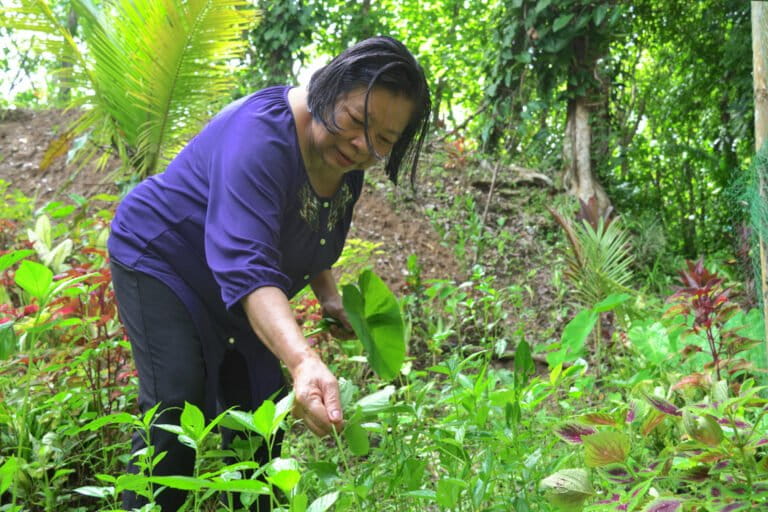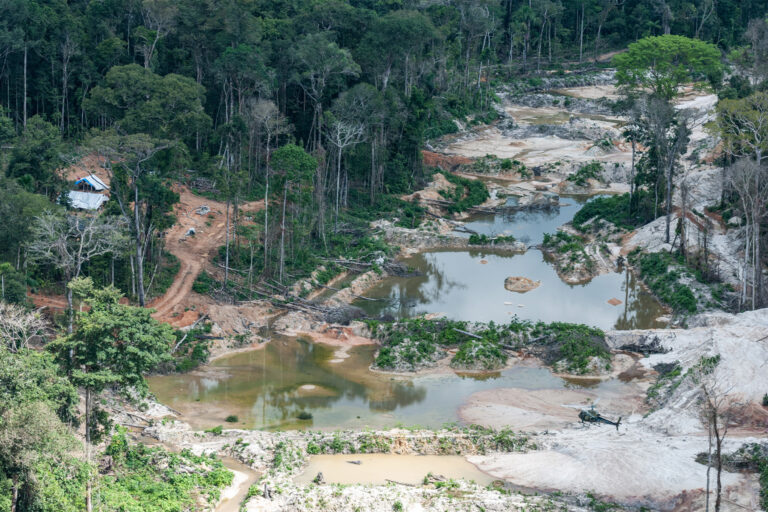- Indigenous peoples and local communities have nuanced, in-depth knowledge of climate change impacts that needs to be recognized by scientists and policy-makers, according to researchers.
- Industrial development threatens nearly 60% of Indigenous lands worldwide and renewable energy infrastructure expansion could become a dominant driver, according to a new peer-reviewed study.
- Indigenous groups and a growing body of studies emphasize the importance of Indigenous leadership, rights and land tenure for climate change mitigation.
Indigenous peoples and local communities have critical intimate knowledge of climate change impacts and adaptation options in their lands while the majority of those lands are under threat from industrial development, according to scientists and other researchers involved with three studies.
Coinciding with the International Day of Indigenous Peoples, August 9, researchers involved with a study of Indigenous peoples’ and local communities’ in-depth knowledge of climate change impacts and adaptation are calling for scientists and policy-makers to recognize that knowledge, which includes changes in atmospheric, physical and biological systems as well as impacts on local livelihoods.
Dozens of researchers from 65 institutions collaborating closely with communities around the world have spent five years gathering and analyzing data on community perceptions and responses to climate change impacts. Working with more than 5,000 participants from 49 cultures and nationalities, the Local Indicators of Climate Change (LICCI) project, led by the Institute of Environmental Science and Technology of the Autonomous University of Barcelona (ICTA-UAB), has examined 52 case studies in Indigenous and local communities.
“The narrative of ‘not exceeding 1.5 degrees’ might give the false impression that climate change impacts affect all people in the same way,” said study leader Victoria Reyes-García, a research professor at the ICTA-UAB, referring to the Paris agreement’s goal to keep global temperatures below 1.5 degrees Celsius above pre-industrial levels.
“In contrast, the site-specific descriptions of climate change impacts provided by [Indigenous peoples] and by [local communities] provide clear evidence that climate change impacts different people in different ways, with disproportionate effects on peoples whose livelihoods directly depend on natural resources,” she told Mongabay.

Communities have detailed climate impact observations, some of which are not otherwise registered or studied, according to LICCI project researchers. For example, Indigenous Meru farmers on the slopes of Mount Kenya have reported changes in fog patterns, which are not reported by weather stations. Indigenous and local communities also have critical, location-specific knowledge of how climate change impacts interact with impacts of industrial, infrastructure and other development projects.
In one of the 52 LICCI project case studies, Indigenous Daasanach agropastoralists in northern Kenya reported droughts due to climate change, barriers to pastoral mobility due to conservation policy, and decreased access to water due to a hydroelectric dam. In response to resulting food shortages and other impacts on local livelihoods, communities have adapted by shifting crops and increasing fishing activity.
“A consistent finding in the LICCI sites is that climate change impacts are not isolated from other development challenges that are being experienced locally,” project researchers noted in a policy brief published in July, adding that Indigenous peoples and local communities “can map the complex and intertwined connections between the types of changes aggravating climate change impacts on their social-ecological system.”
Local responses can guide adaptation policies, and integrating Indigenous and community knowledge and climate science can result in innovative adaptation responses from the local to global level, the researchers pointed out in their brief. The project has found that women and men sometimes observe different climate change impacts and generations may pursue different adaptation options, pointing to a need for inclusive and holistic solutions.
Meanwhile, authors of a new Nature study also note that the integration into policy of values of nature that Indigenous people tend to hold is essential to aid the transformative changes needed to achieve more sustainable futures. At the moment, market-related benefits of nature tend to be the main considerations used in policy, the researchers say. Undervaluing the broader range of benefits of nature — its recreational, life-supporting capacity and even spiritual values — underpins the crises of biodiversity loss and climate change, the authors suggest.
“Indigenous and local knowledge are embodied in different philosophies of good living around the world underpinned by relational values as the basis for collective people–nature well-being, including through concepts such as Buen vivir in South America, Ubuntu in sub-Saharan Africa and Satoyama in Japan,” they say.

However, as the LCCI project and similar studies detail the importance of involving Indigenous efforts in climate adaptation, another study points to the rising threats Indigenous lands face which may curtail Indigenous climate action. Industrial development threatens more than half of all Indigenous lands worldwide, according to a separate new study led by scientists from The Nature Conservancy (TNC). The peer-reviewed study was published August 8 in One Earth.
“Our study adds to others that confirm the outsized contribution of Indigenous peoples to sustaining globally important conservation landscapes,” co-lead authors Christina Kennedy and Brandie Farris told Mongabay, noting that 92% of Indigenous peoples’ lands are in moderate to good ecological condition.
“Most importantly, our study reveals that Indigenous peoples and their lands are likely to confront significant pressures from extractive and commodity-driven development by sectors that have rarely offered benefit to Indigenous communities and have often generated negative impacts,” said Kennedy, director of spatial conservation science at TNC, and Farris, community-led conservation social scientist at TNC.
Industrial development expansion threatens nearly 60% of Indigenous lands worldwide, the study found. Oil and gas expansion threatens 18% of Indigenous lands, commercial agriculture threatens 14%, and mining threatens 9%, but all three combined did not match the potential expansion of solar, wind and hydro-electric energy infrastructure that threatens 42% of Indigenous lands. The latter finding is particularly notable in light of increasing global commitments to a renewable energy transition, the study points out.
“While the potential impacts of commodity agriculture, mining, and oil and gas on Indigenous peoples and their lands are well-known; less well-known are the potential impacts of other emerging sectors. Our global assessment finds that potential expansion by renewable energy infrastructure could become a dominant driver of industrial development pressure on Indigenous peoples’ lands,” said Kennedy and Farris.
The TNC-led study included a global land conversion risk assessment that could help guide priority locations for land protection and Indigenous stewardship support. The authors used the best available global datasets but noted that each have limitations in terms of completeness and spatial accuracy so they encourage a precautionary approach when interpreting their findings.

LICCI project researchers, for their part, included policy recommendations for climate change decision-makers in their policy brief, for improved inclusion of Indigenous peoples and local communities. Among other points, they advocate for a rights-based approach to climate policy and programming with comprehensive, continuous consultation and free, prior and informed consent.
“Adaptation policies and plans that do not recognize the rights of Indigenous peoples and local communities to their territories and resources might reinforce situations of injustice and favor adaptation options for only some sectors of society,” Reyes-García told Mongabay. “Adaptation policies and plans should be grounded in the recognition of Indigenous peoples and local communities rights, for which their participation in the discussion of adaptation policies is critical.”
There is a growing body of studies into the importance of Indigenous leadership, rights and land tenure for climate change mitigation. There have been some gains in Indigenous land rights in recent years, but more progress is critical to curbdeforestation, restore lands, and meet international climate commitments, say ecologists. Meanwhile, more than a third of all environmental conflicts over extractive and industrial development projects affect Indigenous peoples. While research continues, Indigenous leaders and organizations have been raising these issues for decades.
“Indigenous peoples are forced to deal with the burdens of [extractive industry] development on their lands, so we as Indigenous peoples have knowledge about what happens and that needs to be more widely known,” said Kate Finn, executive director of First Peoples Worldwide.
“We have solutions because Indigenous peoples have been on the land,” Finn told Mongabay. “If we’re going to move forward in a new way, we need those Indigenous solutions to be front and center.”
Banner image: Indigenous leader Alessandra Korap Munduruku confronted Anglo American over its attempts to mine on protected Indigenous land, leading the mining giant to withdraw its prospecting applications. Image courtesy of the Goldman Environmental Prize.
‘Sherpas’ real stories are seldom written’: Q&A with authors Ankit Babu Adhikari & Pradeep Bashyal
Citations:
Pascual, U., Balvanera, P., Anderson, C. B., Chaplin-Kramer, R., Christie, M., González-Jiménez, D., Martin, A., Raymond, C. M., Termansen, M., Vatn, A., Athayde, S., Baptiste, B., Barton, D. N., Jacobs, S., Kelemen, E., Kumar, R., Lazos, E., Mwampamba, T. H., Nakangu, B., & O’Farrell, P. (2023). Diverse values of nature for sustainability. Nature, 1–11. https://doi.org/10.1038/s41586-023-06406-9
Christina K., Brandie F., James O., Stephen G., Álvaro F.-L., Julia Fa., Sharon B.-M., Joseph K. (2023). PDF Figures Save Share Reprints Request Indigenous Peoples’ lands are threatened by industrial development; conversion risk assessment reveals need to support Indigenous stewardship. One Earth, https://doi.org/10.1016/j.oneear.2023.07.006
FEEDBACK: Use this form to send a message to the author of this post. If you want to post a public comment, you can do that at the bottom of the page.
